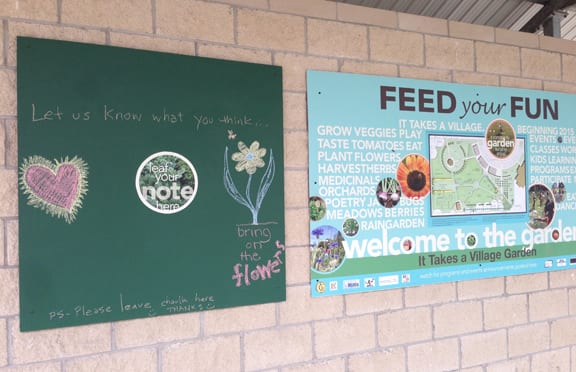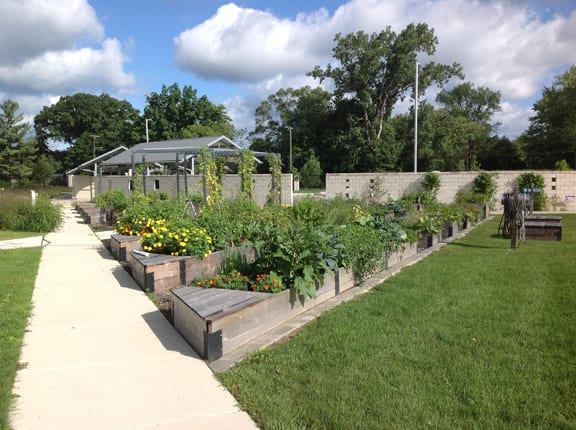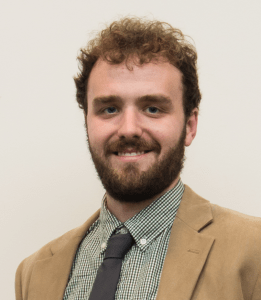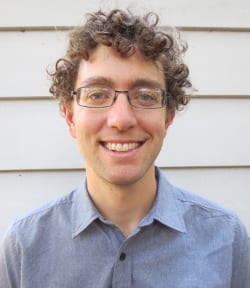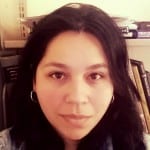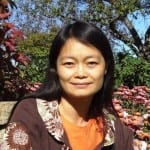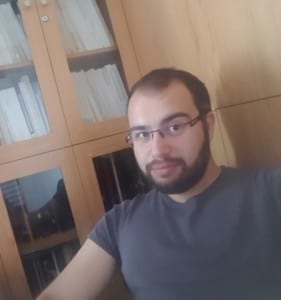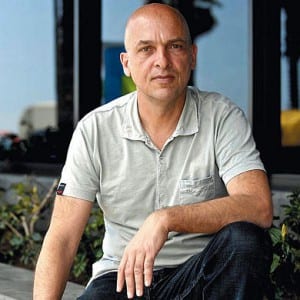We are delighted to announce the 2016 winners of our ASLE grants, a program which is in the last year of a three-year pilot. Community Grants support projects that will help build connections between the environmental humanities and place-based environmental organizations working outside the academy. Translation Grants help to fund translation work in ecocriticism originally published in other languages, and to expand exchanges across cultures and continents. Book/Article/Media Project Subvention Grants were created to support innovative media projects in ecocriticism and the environmental humanities.
ASLE will be fundraising this fall in an effort to continue these grants to fund innovative projects in the environmental humanities. If you would like to assist by making a donation, you can contribute using our Online Donation Form.
Community Grant
A community grant will assist with components of GrowTown, Inc.’s project at It Takes A Village Garden (ITAVG) natural playground and community garden in Detroit, Michigan, the location of the 2017 ASLE Biennial Conference. Grant funds will be used to create and install wildflower, garden, and other information and poetry signs. Botanizing workshops and eco‐poetic fieldwork will take place in conjunction with the signage project, resulting in the content and design for the poetry signage.
Founded on the belief that good design makes life better, GrowTown, Inc., a 501(c)(3) tax‐exempt charitable organization, is a non‐profit Landscape Architecture studio dedicated to transforming neighborhoods and landscapes in post‐industrial cities.
It Takes A Village Garden at Votrobeck Playground is a groundbreaking partnership between the affordable housing community of Renaissance Village Apartments, GrowTown, Inc., Urban Link Village non‐profit youth programs organization, the Detroit Recreation Department, the Michigan State Housing Development Authority, and a grassroots steering committee of local resident volunteers and gardeners all working together to transform the City of Detroit’s Votrobeck Playground into a dynamic community garden (and future urban farm) for children and residents of the neighborhood.
The signage plan includes a series of brightly colored wildflower signs that look like large bouquets – grouped in twos and threes throughout the meadow, they are designed to attract people from a distance, and draw them in. Close up, people can engage with the signs to find ethnobotanical information about the various wildflowers growing in the native meadow, including the common name, Latin name, habitat type, bloom time, and cultural uses and folklore surrounding the plant. Poetry signs, in addition to informational signs, will be created and installed throughout the garden, especially surrounding a poetry pavilion performance space. The signs will be unique in shape and style, providing artistic interest not only in their literary content but in their form.
A series of poetry workshops with children and residents from the local community are planned to generate content and ideas for the signage. This will provide an opportunity to “grow poems” in the garden along with the plants, and the act of creation by local residents is intended to forge another connection to the place that is growing food and providing green spaces for the community.
Subvention Grants
 Madison Jones and Jacob Greene have been awarded $2,000 to fund an open access digital project within the city of Detroit, MI. Entitled “Articulating Detroit: Visualizing Environments,” the project will be of use as a pedagogical tool and an interdisciplinary reference for scholars, freely accessible through the University of Florida Library’s digital repository and through the Trace Innovation Initiative website. Using mapping and augmented reality technology, they will create an interactive map of a walkable route on Woodward Avenue, as well as location-specific augmented reality (AR) overlays, that will help students and scholars visualize the complex spatial networks that make up the city of Detroit. Building from Jeff Rice’s work in Digital Detroit: Rhetoric and Space in the Age of the Network, this open-access digital humanities project seeks to interrogate how an iconic space within Detroit—Woodward Avenue—operates as a virtual and actual environment. The result of this project will be a mobile device application for Android and iOS devices that guides users through a digital tour of the physical space of Woodward Avenue. The project will also be housed online through Trace in a digital portfolio that includes background information about the application and documentation of its use at the 2017 ASLE conference.
Madison Jones and Jacob Greene have been awarded $2,000 to fund an open access digital project within the city of Detroit, MI. Entitled “Articulating Detroit: Visualizing Environments,” the project will be of use as a pedagogical tool and an interdisciplinary reference for scholars, freely accessible through the University of Florida Library’s digital repository and through the Trace Innovation Initiative website. Using mapping and augmented reality technology, they will create an interactive map of a walkable route on Woodward Avenue, as well as location-specific augmented reality (AR) overlays, that will help students and scholars visualize the complex spatial networks that make up the city of Detroit. Building from Jeff Rice’s work in Digital Detroit: Rhetoric and Space in the Age of the Network, this open-access digital humanities project seeks to interrogate how an iconic space within Detroit—Woodward Avenue—operates as a virtual and actual environment. The result of this project will be a mobile device application for Android and iOS devices that guides users through a digital tour of the physical space of Woodward Avenue. The project will also be housed online through Trace in a digital portfolio that includes background information about the application and documentation of its use at the 2017 ASLE conference.
The Trace Innovation Initiative is a digital humanities research endeavor within the University of Florida’s Department of English. Working across the fields of media studies, writing studies, and environmental rhetoric, Trace acts as a hub for several distinct projects, including an online journal, the social media analysis tool MassMine, and the Augmented Reality Criticism digital project series, or “ARCs.”
Madison Jones and Jacob Greene are Ph.D. students at the University of Florida.
Victoria Saramago, Luca Bacchini, and Jamille Pinheiro Dias have been awarded $2,000 to edit an ecocritical volume of essays on Brazilian literature. Provisionally titled “Post-Anthropocentric Modulations in Brazilian Literature,” this collection of essays brings together contributions by a number of scholars that have been shaping the discussions about non-human agency, environmental rights, animism, and the interaction between humans and nonhumans in a Brazilian context. The past decades have been marked by the development of numerous theoretical trends that put into question the epistemological centrality of human agency, such as Ecocriticism and the Environmental Humanities, Animal Studies, New Material-isms, as well as studies on the Anthropocene and Post-Humanism. Lively debates around these and correlate issues have been currently finding a prolific and original space in Brazilian scholarship. This volume aims to present to North American readers the fruitful and original contributions which have been taking place in Brazilian Studies, by scholars based inside and outside Brazil.
Editors have confirmed fourteen authors working in five countries. The contributions range over a variety of topics. Scholars writing on indigenous productions approach both stories collected by travelers about a century ago to books recently published and well received, such as Davi Kopenawa’s The Falling Sky. Others focus on studies closer to North American Animal Studies and Ecocriticism to analyze works by Brazilian major authors, such as Clarice Lispector, João Guimarães Rosa, Mário de Andrade, and Graciliano Ramos, among others. Other essays focus on nonfiction and environmental debates in a historical perspective, such as Euclides da Cunha’s travel accounts on the Amazonian Forest and possible dialogues between 18th-century Brazilian environmental thought and the current discussions on the Anthropocene.
Victoria Saramago is Assistant Professor in the Department of Romance Languages and Literatures at the University of Chicago, Luca Bacchini is an Independent Scholar, and Jamille Pinheiro Dias is a doctoral student in the Department of Modern Languages at the University of São Paulo.
Translation Grants
Report by Heather Sullivan, Chair of Translation Committee
The ASLE translation grant committee (Serpil Oppermann, Serenella Iovino, Stephanie Posthumus, Modhumita Roy, and Chia-ju Chang) is pleased to report that we awarded grants to three excellent groups in our third year of support.
Dong Isbister (University of Wisconsin-Platteville), Xiumei Pu (Westminster College), and Stephen Rachman (Michigan State University) are translating Ethnicity and Environment: New Voices from Chinese Minority Women Writers (a working title), which features recent works from new, emerging, or established women writers from sixteen minority groups in China, into English. The volume consists of an array of writings (poetry, prose, and short stories) originally written in Chinese and published in multiple journals or collections in mainland China from 1990-2015.
These texts were written by Ethnic minority women in post-socialist China (1978- ) who have addressed sustainment of ethnic identity, cultural traditions, and the natural environment in response to social, economic, and political changes. Their works are aligned with an increasing global concern about the wellbeing of humanity and the natural world. Their writings and contributions, however, have remained invisible to English-speaking readers. Translated by thirteen professional and experienced translators including the editors themselves, the anthology will be the most comprehensive source on Chinese multiethnic women writers, highlighting those from ethnicities even less visible than those from more noticeable areas such as Tibet. The anthology will contribute to discursive global environmental humanities by foregrounding non-Western ethnic minority women writers.
Şafak Horzum is translating the Turkish novel The General of the Garbage Dump by award-winning author Oya Baydar, into English. Starting with a flashforward, the novel provides several sub-narratives about the backdrop of a great explosion of a city. The newly found New Town has a high-tech, ultra-safe, synthetically sustained character. The narrator is a neuroscientist exploring the truth behind the destruction of the Old Town by entering into highly protected archives. As an aspect of universality, the novel does not provide proper names for the characters regardless of their human or non-human status. However, the details of the events recounted are given with local themes and traditions of Anatolian people. The novel is divided into four chapters. While first two chapters cover a small proportion of the novel, last two chapters equally share the rest of the work.
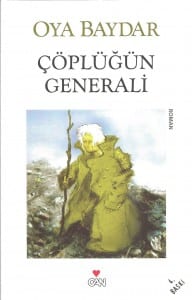 The novel takes place half a century ahead of today (2050s-60s) in a cosmopolitan city (a mesh of Istanbul, Ankara and Izmir) of a modern country (Turkey). The unnamed places and characters help readers connect themselves to narratives told. Due to its socio-political theme, it appeals to a vast scale of contemporary readers who could feel depressed and lost in some stories which merely focus on environmental issues. This novel, however, consists of the concept of “storied matter” (Serenella Iovino and Serpil Oppermann. “Stories Come to Matter.” Introduction. Material Ecocriticism. Ed. Iovino and Oppermann. Bloomington: Indiana UP, 2014. 1-17), material ecocriticism, urban ecocriticism, ecological postmodernism, animal studies and posthumanisms in its fragmented subnarratives and truth-seeking main plot.
The novel takes place half a century ahead of today (2050s-60s) in a cosmopolitan city (a mesh of Istanbul, Ankara and Izmir) of a modern country (Turkey). The unnamed places and characters help readers connect themselves to narratives told. Due to its socio-political theme, it appeals to a vast scale of contemporary readers who could feel depressed and lost in some stories which merely focus on environmental issues. This novel, however, consists of the concept of “storied matter” (Serenella Iovino and Serpil Oppermann. “Stories Come to Matter.” Introduction. Material Ecocriticism. Ed. Iovino and Oppermann. Bloomington: Indiana UP, 2014. 1-17), material ecocriticism, urban ecocriticism, ecological postmodernism, animal studies and posthumanisms in its fragmented subnarratives and truth-seeking main plot.
Şafak Horzum, Ph.D., is a Research Assistant at Hacettepe University in Turkey.
Ellen Skowronski-Polito, affiliated with the Academy of Saint Elizabeth in association with the College of Saint Elizabeth and The Sisters of Charity, Convent Station, NJ, is translating the Spanish poetry collection by José Manuel Marrero Henríquez, Paisajes con burro (Landscapes with Donkey). The translation of Paisajes con burro will introduce English-speaking readers to the visionary poetry of Canarian writer José Manuel Marrero Henríquez.
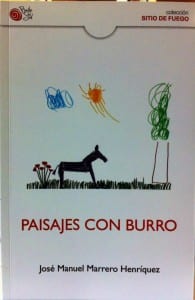 Within the world of the forty-eight poems of Paisajes con burro, the reader encounters “the donkey, -herbivorous warning” and accompanies him on a journey across earth and sea. The untitled poems are assembled as a unified thought, unbroken by chapters, sections or even titles. Beginning in the dusty field off the northwestern coast of Africa, the donkey stands alone and “the hoof scrapes the ground / to bury the point / that its question is missing” (7). Eventually, the contemplative quadruped takes flight, crossing the Atlantic and questioning both his origin and destination from his new vantage during his cosmic travels. In his 2015 critique of Paisajes con burro in the newspaper La Provincia, journalist and literary critic Antonio Puente refers to the symbolism embodied in Marrero Henríquez’s humble gray donkey. Of Paisajes con burro, Puente affirms that “Marrero Henríquez situates his donkey as an emblem, likewise, of the ecological resistance in the face of touristic speculation and machinelike progress.”
Within the world of the forty-eight poems of Paisajes con burro, the reader encounters “the donkey, -herbivorous warning” and accompanies him on a journey across earth and sea. The untitled poems are assembled as a unified thought, unbroken by chapters, sections or even titles. Beginning in the dusty field off the northwestern coast of Africa, the donkey stands alone and “the hoof scrapes the ground / to bury the point / that its question is missing” (7). Eventually, the contemplative quadruped takes flight, crossing the Atlantic and questioning both his origin and destination from his new vantage during his cosmic travels. In his 2015 critique of Paisajes con burro in the newspaper La Provincia, journalist and literary critic Antonio Puente refers to the symbolism embodied in Marrero Henríquez’s humble gray donkey. Of Paisajes con burro, Puente affirms that “Marrero Henríquez situates his donkey as an emblem, likewise, of the ecological resistance in the face of touristic speculation and machinelike progress.”
Marrero Henríquez is tenured professor at the University of Las Palmas de Gran Canaria and a member of the ecocritical research group GIECO in the Franklin Institute at the University of Alcalá. Marrero Henríquez served on the advisory board of EASLCE from 2010 to 2014, and is a member of the advisory board of Philologica Canariensia and of Ecozon@.

